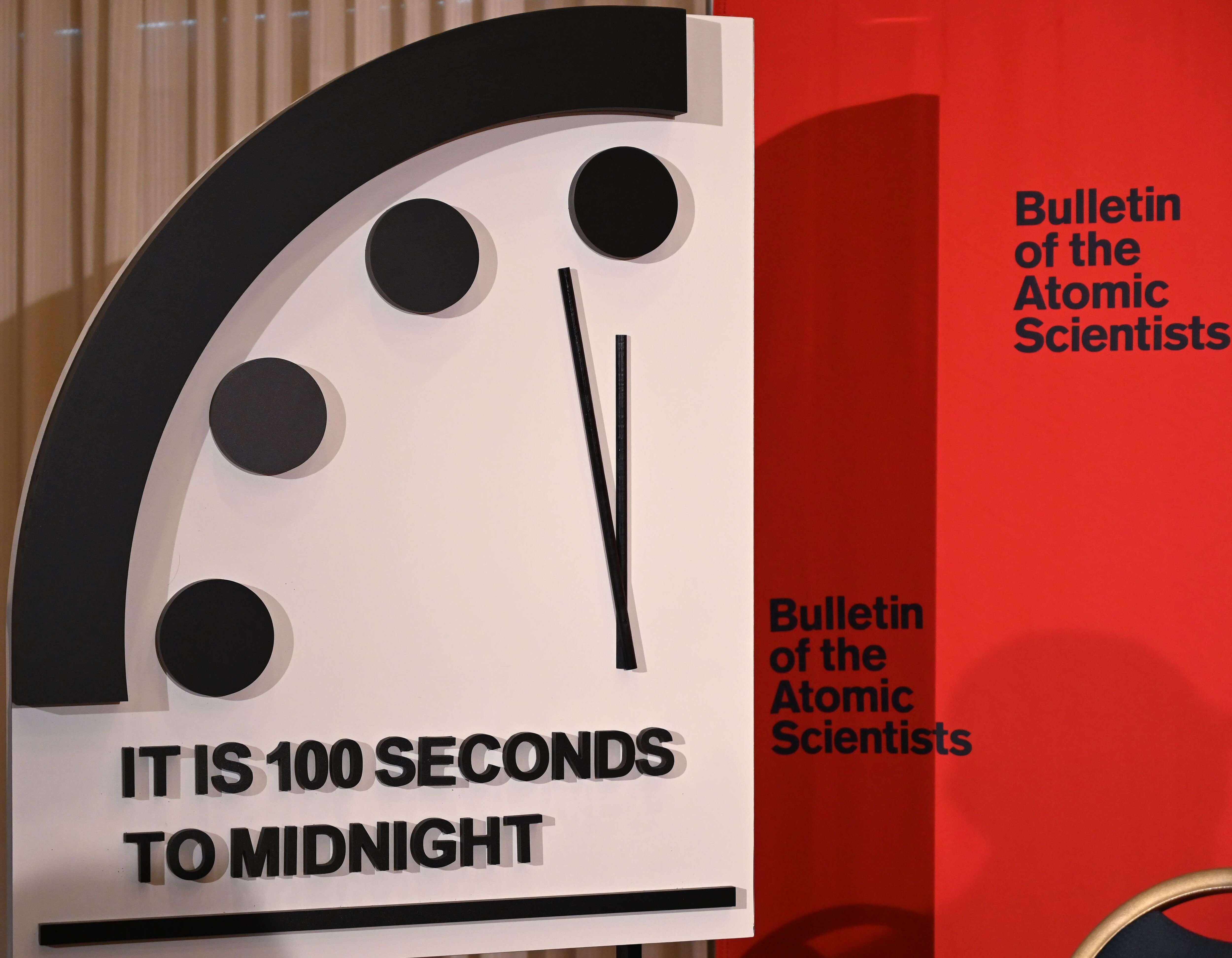Create a free profile to get unlimited access to exclusive videos, sweepstakes, and more!
Despite everything, scientists say Doomsday Clock will not move closer to midnight...for now

There were a lot of points in the last 12 months that, whether our minds exaggerated them or not, certainly felt like we were inching closer to the apocalypse. We had wildfires, hurricanes, police brutality and protests in response to it, extremists storming the U.S. Capitol, disinformation out of control, continued nuclear tension abroad and, oh yeah, the global pandemic that's killed more than 2 million people so far.
To say 2020 was A Lot is quite an understatement.
And yet, this week the Bulletin of the Atomic Scientists announced that the Doomsday Clock — their visual metaphor used to "convey threats to humanity and the planet" — will not be moving closer to midnight this year. That said, it wouldn't be moving further away from midnight either, but we'll take the wins where we can get them.
The BAS released its annual statement earlier this week and announced that the Clock, created in 1947 and updated every January, will continued to stand at 100 Seconds to Midnight in 2021. That's the same position the Clock was placed in last year, and the closest it has ever been to midnight, but under the circumstances the lack of forward movement is cause for at least a little optimism.
In their statement outlining the decision, the BAS cited everything from "accelerating nuclear programs in multiple countries" to a failure to "sufficiently address climate change" to "the continued corruption of the information ecosphere" as reasons for keeping the Clock where it stands. The statement also, predictably, spent a lot of time discussing the pandemic, which the BAS called a major wake-up call moment for world leaders.
"Though lethal on a massive scale, this particular pandemic is not an existential threat. Its consequences are grave and will be lasting. But COVID-19 will not obliterate civilization, and we expect the disease to recede eventually," the statement read. "Still, the pandemic serves as a historic wake-up call, a vivid illustration that national governments and international organizations are unprepared to manage nuclear weapons and climate change, which currently pose existential threats to humanity, or the other dangers — including more virulent pandemics and next-generation warfare — that could threaten civilization in the near future."
Despite these existential concerns, though, the BAS attributed their decision to keep the Clock where it is for another year to a sense of seeing light at the end of the tunnel.
"But amid the gloom, we see some positive developments. The election of a U.S. president who acknowledges climate change as a profound threat and supports international cooperation and science-based policy puts the world on a better footing to address global problems. For example, the United States has already announced it is rejoining the Paris Agreement on climate change and the Biden administration has offered to extend the New START arms control agreement with Russia for five years. In the context of a post-pandemic return to relative stability, more such demonstrations of renewed interest in and respect for science and multilateral cooperation could create the basis for a safer and saner world."
So until next January, the Doomsday Clock will continue to sit at the closest position to midnight that it's ever been, though it will not move closer. The BAS statement noted that a lack of "substantive progress" so far on the issues they outlined is a key reason for not moving the block back from 100 seconds, which means that if 2021 unfolds in a more positive way, we could actually see a retreating Doomsday Clock by 2022. Of course, that depends on the next 12 months...


























